Silver Age Fantastic Four Comics That Still Hold Up
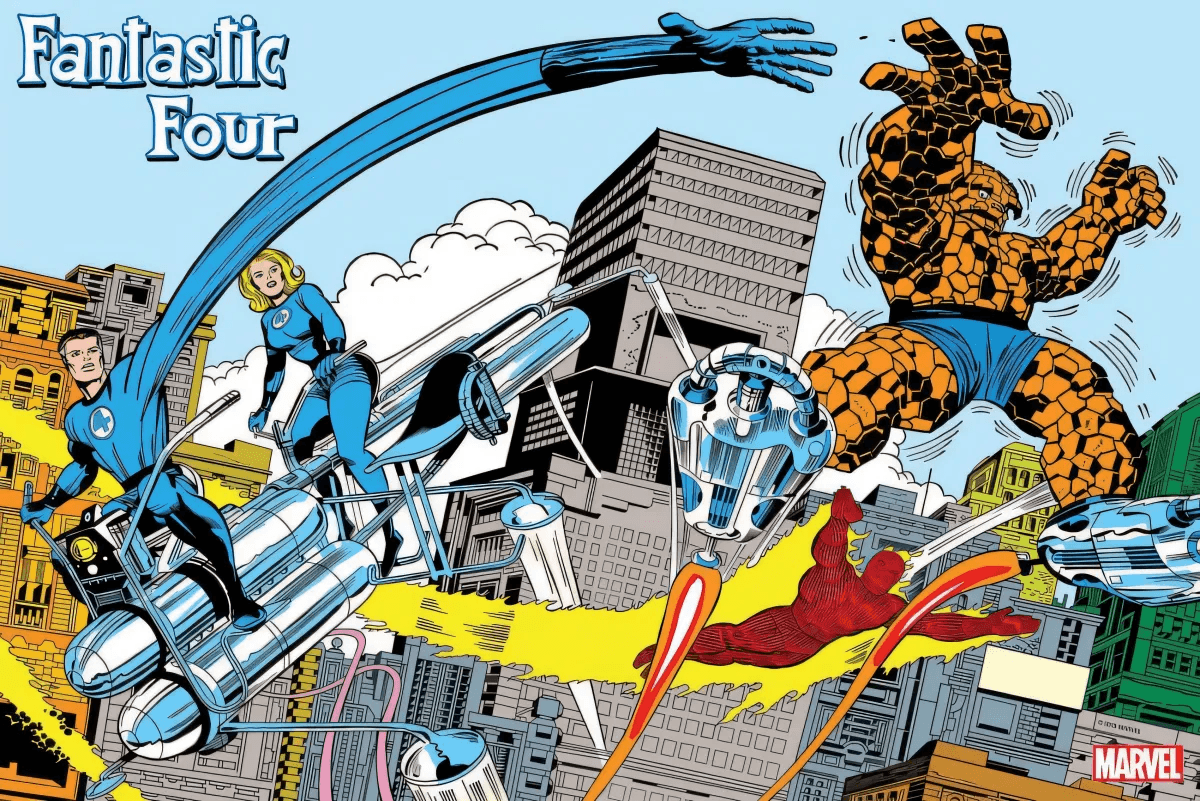
Writer Stan Lee and artist Jack Kirby's original 100 issue run of the Fantastic Four, from 1961- 1970 is the foundation upon which the Marvel Universe was founded. Based on a superhero family of explorers stationed in New York City, the team embarked on many offbeat adventures in their defining run of comics. Several staple Marvel Cinematic Universe (MCU) characters from Black Panther, the Skrulls, Inhumans, and Kree radical Ronan the Accuser were first introduced in the pages of Fantastic Four.
However, comic books have evolved drastically as a medium since the birth of the Fantastic Four during the period of 1956-1970, which would become known as the silver age of comics. Luckily, Marvel's First Family of Comics offers a plethora of stories for contemporary readers to sink their teeth into and enjoy as if the books released today.
This Man, This Monster (1966)
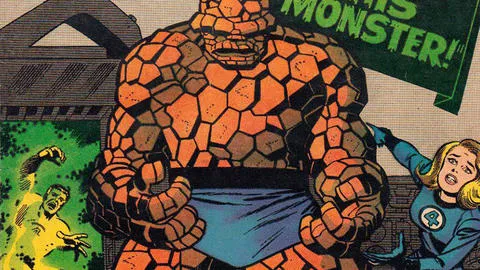
Perhaps the most tragic Fantastic Four tale constructed by Kirby and Lee, This Man This Monster takes the time to explore the heart and soul of the Fantastic Four in Ben Grimm a.k.a. the ever-loving blue-eyed Thing. Following a startling encounter, The Thing is replaced by an eerily human imposter named Ricardo Jones. A scientific genius harboring jealously toward team leader Reed Richards, Ricardo has Reed trapped within the otherworldly dimension known as the Negative Zone, located in the Fantastic Four's Baxter Building headquarters.
However, Ricardo is stopped short of killing Reed when the heroism within Ben Grimm begins to seep onto Jones' own character. Though the story may not consist of huge battles and supervillains, This Man This Monster is an emotional piece that gets to the very core of the Fantastic Four's loneliest character.
The Galactus Trilogy (1966)
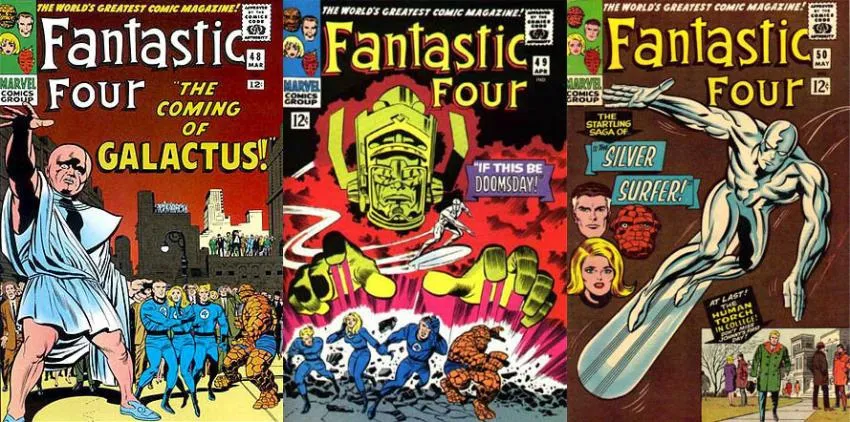
Up until The Galactus Trilogy, The Fantastic Four's cosmic adventures generally occurred in the far reaches of outer space. With the arrival of the feared Devourer of Worlds Galactus and his equally powerful herald Norrin Radd a.k.a. the Silver Surfer, the action would make its way to Earth. Standing in the way of Galactus and his unsavory appetite are the Fantastic Four. Though the Fantastic Four are mere superhumans fighting back against a cosmic deity, the fight against Galactus in Manhattan is one to remember.
Unlike past Marvel villains, Galactus presented the heroes with a new obstacle in not only his massive powerset but the fact that he was a threat that could not be bargained or reasoned with. Earth and the Fantastic Four just happened to be Galactus' latest choice on the menu.
Bedlam at The Baxter Building (1965)
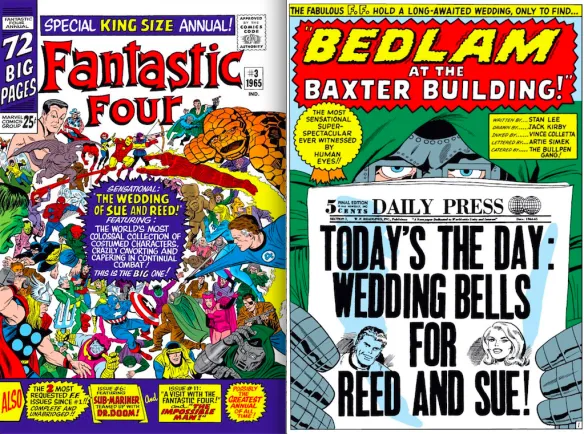
Even superheroes need time away from crime-fighting to renew their vows. The third in the double-sized Fantastic Four Annual series sess the famous odd couple of the titular team, Reed Richards and Sue Storm, finally celebrating their long-awaited wedding... in a world full of superheroes and supervillains. Fantastic Four archenemy Doctor Doom uses a newly invented device to attract an overabundance of the team's past foes to The Baxter Building in his attempt at sabotaging the famous Fantastic Four wedding, making the Four's headquarters the hottest place to be.
The 72-page wedding annual sees a visit from every mainstay superhero and a supervillain from across the Marvel Universe, including Earth's Mightiest Heroes The Avengers, time traveler Kang the Conqueror, the friendly neighborhood Spider-Man, Skrull champion Kl'rt a.k.a. the Super Skrull, and outcasts the X-Men. The wedding of the Fantastic Four is an event in and of itself due to the sheer amount of heroes and villains coming together in the same book.
The Black Panther (1966)
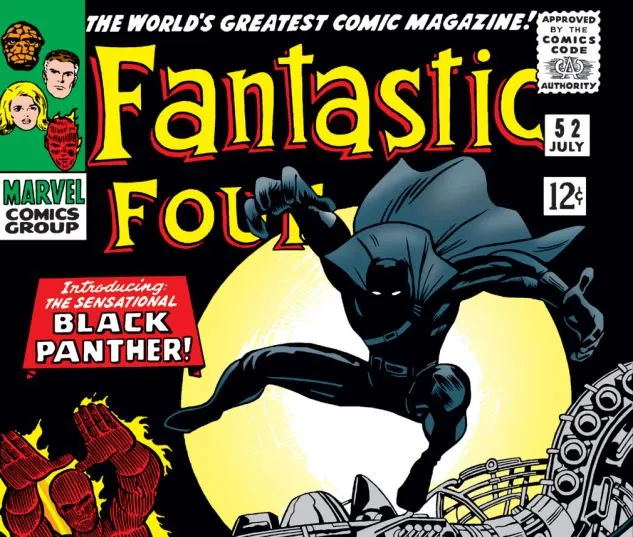
Before his recruitment among The Avengers, Fantastic Four #52 would introduce readers to the mysterious African ruler known as The Black Panther. Born T'Challa, rightful heir to the throne of the African nation of Wakanda, Black Panther was crowned king from childhood and raised in several forms of hand-to-hand combat, martial arts, and even non-physical feats such as chemistry in order to be the greatest warrior in his land. Luring America's beloved Fantastic Four to Wakanda, T'Challa was intent on eliminating the team and asking questions later.
However, Panther and the heroes would quickly put aside their differences to combine forces against an even greater threat in unscrupulous poacher Ulysses Klaw. Panther's introduction is not only significant in that he was a new superheroic addition to the Marvel Universe but a central African superhero at the forefront of an established comic book title, as opposed to a minor role.
The Peril and the Power (1966)
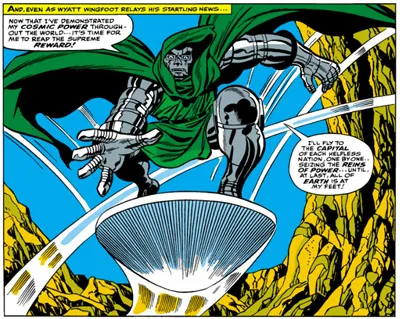
Similar to The Galactus Trilogy, Peril and the Power was loosely adapted for the big screen through 2007's live-action film Fantastic Four Rise of the Silver Surfer. The Fantastic Four's foe Doctor Doom shares his first brush with godhood by stealing the primordial Power Cosmic energy from the Silver Surfer and using his newfound abilities to see world domination through. What makes this arc stand out above the rest is the fact that arch-villain Doctor Doom ultimately achieves his goal and acts as leader of the Earth for a number of issues.
Doom's planetary takeover takes the villainous monarch into battle with his greatest threat the Fantastic Four, which culminates in an epic fistfight with The Thing. Though the fight ends in a stalemate, Doom flies a bit too close to the sun and suffers the consequences in the end. Peril and the Peril shine a spotlight on the character of Doctor Doom and the lengths that he will go in order to achieve his goals, which happen to conflict with those of the Fantastic Four.
Nearly every issue of the original Fantastic Four run was introducing a new addition that would become a crucial element in the pages of Marvel Comics. Without the silver age Fantastic Four issues, the modern Marvel Universe would be a completely different arena in the current market. Now that the Fantastic Four are becoming integrated into the MCU, there exists an ample opportunity to finally harken back to the comics which continue to resonate with readers.
Opinions and Perspectives
Looking back, it's amazing how many enduring concepts came from these issues.
Sue Storm's power development throughout these issues is really well done.
The Inhumans introduction was another game-changer. They added so much to the Marvel Universe.
The way they handled the FF's public identity was interesting. No secret identities needed.
Johnny Storm's growth from hothead teenager to responsible hero is well done in these issues.
These comics really show why Reed Richards was considered the smartest man in the Marvel Universe.
I love how they weren't afraid to let their villains occasionally win. Made everything feel more unpredictable.
Reading these reminds me why the FF are called Marvel's First Family. The dynamics are just perfect.
The pacing in these issues is fantastic. They knew exactly how to keep readers engaged.
Amazing how many of these villains are still relevant today. They really knew how to create lasting antagonists.
I miss when comic backgrounds were this detailed. Kirby never skimped on the environments.
Doctor Doom's character development throughout these issues is fascinating to follow.
The relationship between Reed and Sue feels surprisingly modern in these issues.
Sometimes I think modern FF writers try too hard to recapture this era instead of doing their own thing.
The Galactus Trilogy changed superhero comics forever. Nothing was ever quite the same after that.
These stories really nail the balance between science fiction and superhero action.
I appreciate how they handled Black Panther's introduction. He wasn't a stereotype, but a fully realized character.
You can really see Kirby's art evolving through these issues. By the time we get to Galactus, it's just incredible.
The wedding issue is basically a who's who of Marvel at that time. Amazing how many characters they managed to include.
I love showing these to new readers. They're usually surprised by how well the stories hold up.
Lee and Kirby were really firing on all cylinders during this period. The creativity is just off the charts.
The Thing's characterization in This Man This Monster is probably the best example of silver age character development.
Not sure I agree about the dialogue being charming. It can be pretty tough to get through sometimes.
I always get a kick out of how the Negative Zone was introduced. Such a simple concept that became so important later.
The world-building in these early FF comics is incredible. They created so much of the Marvel Universe we know today.
My kids love these issues as much as I do. That's how you know they're truly timeless.
I find it fascinating how they balanced serious themes with lighter moments. Modern comics sometimes forget to include the fun.
The emotional core of these stories is what makes them hold up. Look at how they handled Ben's struggles with his appearance.
What impresses me most is how many of these concepts still work today. Galactus especially feels timeless.
The family dynamic of the FF really shines in these issues. You can see why they call them Marvel's First Family.
Remember when comics could tell a complete story in one or two issues? These silver age FF comics were masters at that.
I thought the way they handled Doctor Doom in Peril and the Power was perfect. He actually won for a while!
Reading these old issues really shows how much the MCU borrowed from them. The Skrulls especially feel exactly like their silver age versions.
You're missing the point about This Man This Monster. It wasn't about being tragic, it was about identity and redemption.
The wedding issue was pure chaos and I mean that in the best possible way. Everyone who was anyone showed up!
Has anyone noticed how the Fantastic Four were basically scientists first, superheroes second? That was pretty unique for its time.
I actually find the dialogue charming. Sure it's wordy, but there's something endearing about the way they explained everything.
True, but let's not get too nostalgic. The dialogue can be pretty heavy-handed by today's standards.
Anyone else think modern comics could learn a thing from these silver age stories? They packed so much story into single issues.
The art in Peril and the Power still amazes me. Kirby really outdid himself drawing Doom with the Power Cosmic.
Black Panther's introduction was groundbreaking. Having an African superhero featured so prominently in 1966 was way ahead of its time.
I respectfully disagree about This Man This Monster being the most tragic FF tale. The coming of Galactus had way more emotional weight in my opinion.
Just finished reading the wedding issue again. The way they managed to gather practically every Marvel character at the Baxter Building was incredible for its time.
The Galactus Trilogy changed everything. Before that cosmic threats were always somewhere out there, but bringing Galactus to Earth was a game changer.
I love how This Man This Monster really dives deep into Ben Grimm's character. The emotional depth they achieved in 1966 is honestly impressive.
